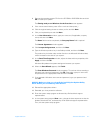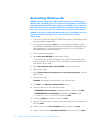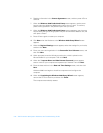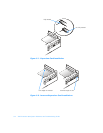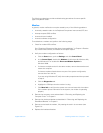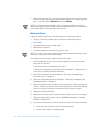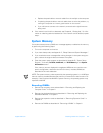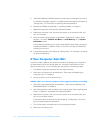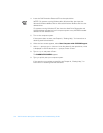
support.dell.com Checking Inside Your Computer 5-5
c. Replace the patch cable or network cable from the wall jack to the computer.
d. If replacing the patch cable or network cable does not solve the problem, try
moving the computer to a known good location on the network.
e. If you still cannot connect to the network, ensure that the right drivers are
being used.
9. If the network card is still not detected, see Chapter 6, “Getting Help,” for infor-
mation on obtaining technical assistance. If the network card is detected, repeat
step 1.
System Memory
If a random-access memory (RAM) error message appears, troubleshoot the memory
by performing the following steps:
1. Turn on the computer and monitor.
2. If you hear a beep code, see Appendix C, “Beep Codes and System Messages.”
3. If you received an error message after making changes in the system setup pro-
gram, restore the original values and restart the system.
4. Enter the system setup program as described in Appendix B, “System Setup
Program,” and verify 1st Bank, 2nd Bank, and To t al Memory on the System
Information screen.
If the memory amount displayed in megabytes (MB) does not match the com-
puter’s configuration, reseat the dual in-line memory modules (DIMMs) as
described in the next subsection.
NOTE: The system memory value reported by the operating system is 1 or 2 MB less
than the memory installed because that memory is reserved for video functions. For
example, if the computer has 64 MB of system memory, the operating system may
report 62 or 63 MB.
Reseating DIMMs
1. Remove the computer cover as described in “Removing and Replacing the
Computer Cover” in Chapter 2.
2. Remove the riser-board bracket as described in “Removing and Replacing the
Riser-Board Bracket” in Chapter 2.
3. Remove the expansion cards as described in “Removing Expansion Cards” in
Chapter 2.
4. Remove the DIMMs as described in “Removing a DIMM” in Chapter 2.



